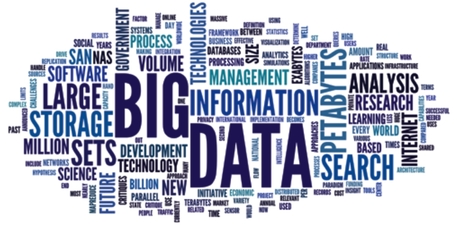 ‘Big Data’ is a trendy term, often thrown around with the same allure as ‘market research,’ ‘algorithm’ and other such catchphrases that make people sound smarter than they actually are. So let’s first define big data, talk about a few software options available, then dissect the concept to understand how it can profit restaurant owners, managers and employees. Big data is nothing more than using transaction-level data to form overarching strategies to increase profitability. For restaurants, this means using patterns from point-of-sale data to refine your menu, change staff procedures, adjust pricing and/or alter promotional tactics. For example, a restaurant owner can examine all the POS transactions over the course of a week, sort them by cashier, then divide each total by the number of covers to get each server’s average revenue/cover. This statistic allows the owner to identify his star performers, average performers and underperformers. The owner can then use this statistic as a means for shift/section assignments, promotion and staff-wide goals and contests. Choosing your Data Software Numerous analytics platforms exist to monitor POS data, and most don’t require any kind of numbers-based expertise. A basic Google search will unveil dozens of options, so simply browse and find a service that matches your price point and standards for convenience. If I had to recommend a service, it would be Spotfire. Spotfire sorts POS data by employee, check open/close, gross sales, revenue/cover, item count, turnover time, and many additional categories. Spotfire also allows for easy exporting into Excel, which, if you do have analytical expertise at your disposal, creates even more opportunities. "A surprising number of management teams are unaware of their individual item sales." Another common software is Avero, which specializes in restaurant analytics. You’ve got some pretty big names with Avero—Caesar’s Entertainment, Four Seasons and B&B Hospitality among others. A big-brand software will be more beneficial for learning and troubleshooting, with more advice available within the restaurant community.
Managing Financial Performance Once an owner has chosen a software, incorporated it into your POS and familiarized yourself with it [this is a long process, but worth it!], it’s time to explore ways to optimize profit. Here’s a few tips to boost the bottom line:
Share the Data While an owner or manager may be the one managing the data, it’s the whole restaurant’s responsibility to understand the data. Use your data to form restaurant-wide goals, such as increasing average revenue/cover, and update staff on their progress every two weeks. This allows the entire group to not only buy into data usage, but embrace it as a way to improve their performance and their paycheck. Use the data to your advantage by quantifying benefits from larger tips for your staff. For example, say you set a revenue/cover goal of $25 and you have a server at $24.68. Increasing $0.32/cover * 100 covers/day * 22 days/month * 15% average tip is an extra $105 in the server’s pocket each month. That’s your iphone payment over the course of a year! Once servers see what’s in it for them, data usage becomes an immediate best friend. The possibilities for incorporating data into restaurant management are virtually endless. The backbone of any of these tactics, however, is reliable data. Managers should put procedures in place to ensure servers enter information into POS systems correctly. Administering random audits and using assistants to monitor POS entry should be used with caution. Instead, communicate the reason why you need accurate data to your service staff, placing particular focus on how accurate data will benefit them. This communication will improve workplace culture and allow owners and managers to better execute on their data-driven visions.
0 Comments
Leave a Reply. |
AuthorBenjamin Brown is a seasoned restaurant writer and hospitality consultant, serving up SoCal's hottest food news and reviews. Categories
All
Archives
June 2021
@Foodie_Biz |
|
Home
About
Blog
Consulting Tips
Contact
Legal
|
Foodie Biz provides restaurant news and reviews for the food community, as well as consulting advice for restaurant owners and other hospitality professionals.
Contact Foodie Biz for media opportunities and freelance consulting projects. Contact Foodie Biz |



